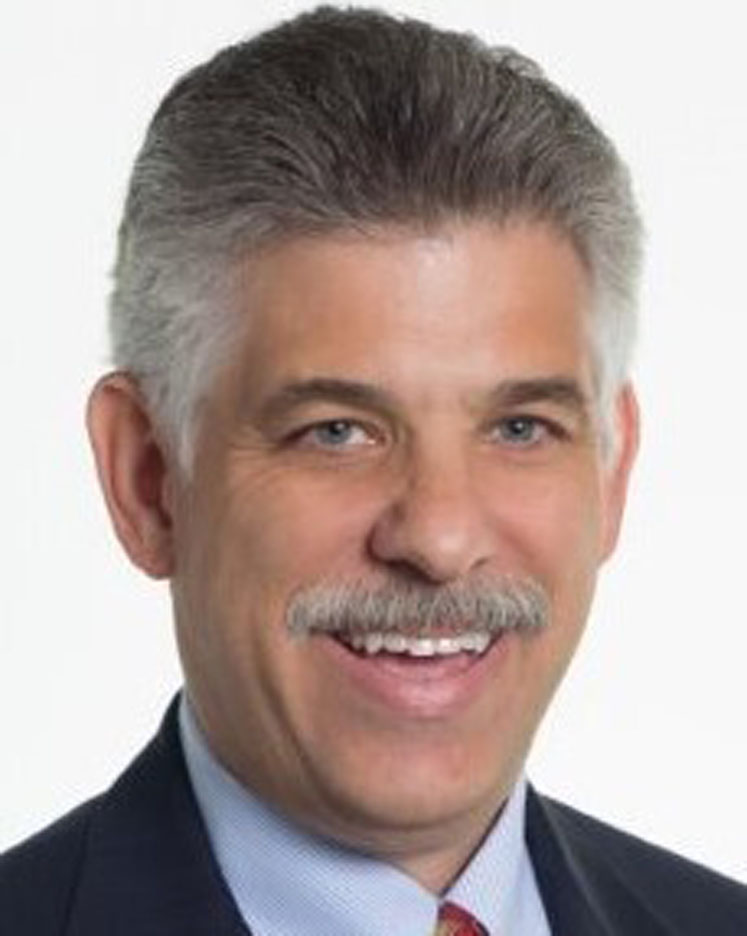Having examined the changing demands and drivers within the pharmaceutical outsourcing sector in part I, the conversation turns to finance. I ask the panel what’s driving further investment in the contract service market and what that meant for their organisation.
John Ross, President, Mayne Pharma US and Metrics Contract Services, explains: “The use of contract services enables pharma companies to accelerate project timeframes, allows for cost efficiencies compared with building in-house capacity and provides access to expertise as needed.”
“The continued growth of well-funded virtual pharma companies in the market has also increased the demand for outsourcing,” he continues: “The complexity of HPAPI manufacturing, facilities and equipment, alongside the high capital expenditure requirements and the levels of operator training required can create barriers to entry for all sizes of pharmaceutical companies, most obviously virtual. Metrics partners with virtual companies from concept to commercialisation, resulting in a smoother and quicker path to clinical trial or commercialisation.”
“Some large drug companies have internal HPAPI manufacturing capabilities; however, these usually operate at commercial scale. Most small and medium-sized companies have neither the resources nor the requirements to invest in captive infrastructure. As such, many prefer to rely on contract service providers during the early development stages, with HPAPI outsourcing increasing rapidly,” John adds.
“Industry perception of outsourcing and its benefits has also evolved,” he continues, “particularly within large pharma companies. There is now a growing acceptance that outsourcing is a viable alternative that doesn’t eliminate differentiation or risk intellectual property."

John Ross
"Finally, strong industry valuations provide a supportive basis for us to continue to invest for growth, such as our recent $10 million investment in the expansion of Metrics’ novel oral solid dosage manufacturing facility in Greenville (NC, US).”
Talking about drug delivery, Lonnie Barish, VP of Business Development for Bora Pharmaceuticals notes that it can be a complex system depending upon the type of molecule (small or large), disease state, organ affected, route of administration, drug characteristics and much more.
“Many CDMOs are diversifying into these different delivery methods, some of which include going from a small molecule CDMO that only makes tablets and capsules into one that also manufactures and packages semisolids (cream, lotions, gels) and liquids. We see the needs of our pharma partners diversifying into these forms as part of their portfolio."
"So, here at Bora, we’ve done the same. Some companies are also crossing the manufacturing chasm and going from small molecule production into large molecule manufacturing. This seems like a small task … but the manufacturing processes are very different.”
“We’re also seeing a shift from small regional players with a single manufacturing site into ones with multiple sites in different countries. Many are going from North America or Europe to Asia."
"We at Bora are going in the opposite direction. Already having a great understanding of the Asian market, while still serving North America and Europe, we felt that having a major facility in North America was a great logical expansion step. This additional facility provides greater regional coverage and more reliability,” he adds.
Stefan Beyer, President and Managing Director, Vibalogics, offers: “Biopharma’s continued investment in treating chronic disease and cancer will drive drug development for decades. The response by contract service providers has been to invest in capabilities that serve the commercial development of these therapeutics."
"Our customers have been asking more from us, which is driving our business strategy. We are expanding our capabilities and scope, moving beyond early phase clinical manufacturing to support customers across their clinical and commercial journeys.”
He adds: “Vibalogics is currently expanding in the US with a late phase and commercial facility that will soon be operational. Pharma and biotech companies are also mitigating risk by outsourcing their new product developments earlier to contract partners with the necessary capabilities and capacity.”
The coronacoaster effect
As the debate returns to the inevitable topic of COVID-19, we talk about the its impact on the supply chain and how has affected outsourcing models and relationships. Lonnie takes the helm and says: “As a life-giving, life-saving, essential business, pharmaceuticals in the COVID-19 era brought another national and international vulnerability to the fore."

Lonnie Barish
The industry’s awe-inspiring vaccine development work positions it to play a heroic role in helping to bring closure to an unprecedented pandemic. By contrast, all the stakeholders— the industry, patients, the medical community, regulators and governments — quickly realised that they were exposed. The pharmaceutical industry has become extremely globalised during the past three decades, with intricate supply chains winding worldwide.”
“However,” he continues, “there was an almost instant call — certainly in the US, EU and other countries — to bring pharmaceutical manufacturing ‘home’ as a strategic national asset."
"In the absence of global leadership regarding how to combat the disease, each country took a different path that led to different results. But, because the post-WWII global order has embraced interconnected trading relationships, supplies from one affected country exposed vulnerabilities within the entire supply chain."
"Although nationalism has been on the rise for a handful of years now, like so many other trends, the pandemic added rocket fuel to already simmering fires.”
Adding to the discussion, Stefan notes: “For most of pharma and its manufacturing partners, the pandemic highlighted the supply chain’s strengths as well as its vulnerabilities. Our experience, I think, was similar to our peers in the fact that we actually became closer to our customers. It also became clear that throughout the entire supply chain, the level of mutual support and co-operation also helped to shape the industry’s impressive overall response to the pandemic.”
“What is also changing is the nature of the relationship between industry and its contract development and manufacturing partners. Drug developers are no longer just engaging with CDMOs on a project-by-project basis but establishing more strategic, long-term collaborations."
"The trend is becoming clear: drug developers are bringing their projects to contract partners and engaging them more fully. The fact that programmes with CDMO partners are now often fully integrated — from early development through commercialisation and distribution — shows just how extensive and long-term these partnerships have grown.”
“The CDMO is no longer considered to be a vendor, but is now seen as a long-term partner. The need to react quickly to emergent diseases is also increasing the demand for outsourcing partners, with established partnerships and a solid track-record being extremely important. The industry will not only need capacity for large-scale COVID-19 vaccine production, but access to capabilities to produce virotherapy products and vaccines to fight HIV and similar diseases,” Stefan adds.
“The COVID-19 pandemic has undoubtedly impacted the global pharmaceutical industry and its supply chain, agrees John: “Lockdowns and restrictions on individuals and movement between countries has meant delayed supplies from manufacturing facilities; disrupted distribution and shipping has created problems in terms of product delivery. This has changed the typical outsourcing model as companies need to give more consideration to supply chain reliability, business continuity and understanding the different tiers of inputs.”
Looking ahead
Bringing the roundtable to a close, the panel comments on whether the wider discussion on reshoring drug product manufacturing will impact outsourcing in the future.
“It should,” says Stefan: “Reshoring back to the EU and US delivers the reliability of drug and vaccine supply that our societies expect. The biologics and vaccines market will be affected as well. Outsourcing partners are likely to gain advantage if they have manufacturing capacity they can leverage in more than one region.”
“To some degree, yes,” confirms John: “Companies may begin to spread production across different markets, limiting the effects of future disruptions; but, few things in pharma move quickly and the matter is highly complex."
"Significant offshore supply exists today because of the lower cost base, growing competence and, in some cases, less rigorous environmental standards associated with certain processes in certain regions. Pharmaceutical supply chain security is a core bipartisan issue at hand; however, so is drug pricing. The optimal solution is not straightforward and to change course will be costly and time-consuming.”

Stefan Beyer
“My own opinion is that the pandemic raised a lot more questions about supply chain continuity and risk than actually materialised. As such, I believe that post-pandemic considerations will be muted if the impact is moderate or minimal. Corporate resources are often limited and risk mitigation programmes are generally supplanted by strategic growth initiatives when constrained resources are implicated,” he concludes.
Contributing the final word, Lonnie says: “Ultimately, every nation’s pharmaceutical supply chain must be strong and resilient enough to safeguard the health and well-being of its people. So far, despite the challenges of the COVID-19 pandemic, the US pharmaceutical supply chain (along with that of most advanced nations) has proven to be both."
"Regardless, there is room for improvement. While supply chain redundancy is simply good business, the pandemic has spurred a re-examination of the issue. Although redundancy is needed whenever possible, more than anything, the industry and regulators must be better positioned to manage the unforeseen swiftly.”
“API suppliers could be in one country (or multiple locations), components in another, raw materials in still others and packaging supplies elsewhere. You can have a well-constructed, multicontinental redundant supply chain plan that still ends up facing problems. And there’s no guarantee that if a pharma company had a supplier in the US, that site would have been operational.”
“Regulatory constructs that promote agility could be a large part of the solution. National governments and their health ministries should work with pharma companies and their manufacturing partners (CDMOs) to have the ability to use/be back-up suppliers."
"CDMOs could be prequalified with a streamlined tech transfer process in the case of a license holder-related shortage. For human safety, expediting a way of producing or getting a product back on the market quickly or completely avoiding a shortage is paramount. This could be part of a reshoring or manufacturing agility concept,” he adds.
A call for global regulatory harmonisation
“One of the pharmaceutical industry’s biggest hurdles is the non-existence of harmonised regulatory standards around the world,” comments Sam Ricchezza, President, Bora Pharmaceuticals North America: “Increased harmonisation would alleviate drug quality and safety concerns and would help us to move processes around the world more easily. This would help us to avoid the drug shortages caused by both quality breaches and unforeseen events, such as the pandemic.”
“For decades, manufacturers worked to reduce costs by applying as much just-in-time (JIT) inventory control as possible. However, given the pandemic, JIT manufacturing has evolved into ‘just-in-case’ manufacturing, reflecting the reality that highly efficient processes and inventory control are useless if the conditions that these processes are designed for no longer exist.
“Pharmaceutical companies are looking to secure their drug supplies against potential shortages, including increasing their safety stocks to mitigate the risks of drug shortfalls. As such, good CDMOs are ones that prepare for all types of natural disasters and offer a full complement of buffer stock, raw materials, components, spare parts, personnel and essential supplies. This also requires good communication, so that each party is aware of the contingency steps that are being taken.”
